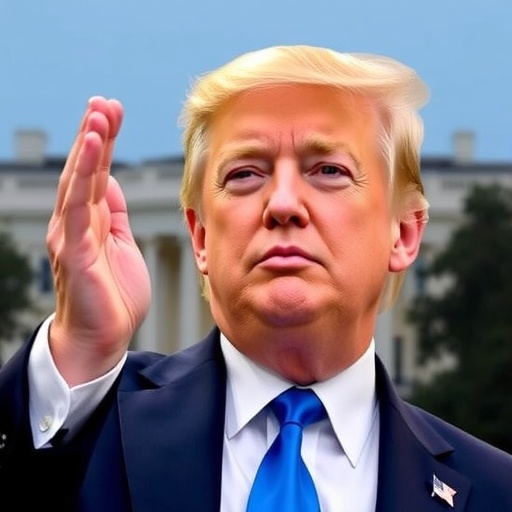Leading Universities Reject Trump Administration’s Federal Funding Compact: A Blow to Higher education Policy Alignment
In a bold stand against perceived political interference, some of America’s most prestigious institutions of Higher education have turned down a lucrative offer from the Trump administration. Brown University, the Massachusetts Institute of Technology (MIT), and the University of Pennsylvania are among the first to announce their university rejection of the proposed policy compact, which promised boosted federal funding in return for universities aligning their research and curriculum with administration priorities. This decision, revealed late last week, has thrown the initiative into uncertainty, signaling deep rifts between Washington and academia.
- Prestigious Institutions Lead the Charge in University Rejection
- Unpacking the Federal Funding Offer and Its Hidden Demands
- Academic Leaders and Experts Voice Concerns Over Policy Compact
- Ripples Across the Higher Education Funding Ecosystem
- Navigating Future Federal Funding Negotiations and Policy Shifts
The move comes at a time when federal funding for research and student aid is more critical than ever, with U.S. universities relying on billions from government sources annually. According to the Association of American Universities (AAU), federal investments in Higher education totaled over $43 billion in fiscal year 2023, supporting everything from groundbreaking scientific discoveries to affordable education for millions. Yet, the policy compact—framed by White House officials as a “mutual partnership for national progress”—has been criticized as a Trojan horse for ideological control, prompting swift backlash from academic leaders.
Prestigious Institutions Lead the Charge in University Rejection
The wave of university rejection began with Brown University, whose President Christina Paxson issued a strongly worded statement on Friday, declaring, “We cannot compromise the independence that defines our mission in higher education.” Brown’s decision reverberated across Ivy League circles, highlighting concerns over the Trump administration‘s push to tie funding to specific policy outcomes, such as prioritizing research on border security technologies and energy independence initiatives.
MIT followed suit within hours, with Provost Martin A. Schmidt emphasizing the institute’s commitment to unfettered innovation. “Federal funding has fueled our advancements in AI and quantum computing, but strings attached to political agendas undermine the very essence of scientific inquiry,” Schmidt said in an email to faculty. MIT, which receives approximately $1.5 billion in annual federal grants, stands to lose significant resources, yet its leadership views the policy compact as a threat to academic freedom.
Not far behind was the University of Pennsylvania, where Provost Beth A. Winkelstein announced the rejection during a virtual town hall. “Our partnerships with government have always been based on merit, not mandates,” she stated, underscoring Penn’s role in medical research funded by the National Institutes of Health (NIH). These three institutions alone represent a combined endowment exceeding $100 billion and educate tens of thousands of students, making their unified stance a powerful statement against the Trump administration‘s approach.
Other universities are watching closely. Early reports suggest Harvard and Stanford may soon follow, while smaller liberal arts colleges express similar reservations. A survey by Inside Higher Ed, conducted last month, found that 68% of academic administrators viewed the policy compact unfavorably, citing fears of censorship in sensitive areas like climate science and social justice studies.
Unpacking the Federal Funding Offer and Its Hidden Demands
At the heart of this controversy is the policy compact, a multifaceted proposal unveiled by the White House Office of Science and Technology Policy in early October. The initiative aimed to inject an additional $10 billion into federal funding for higher education over the next five years, targeting STEM fields, infrastructure upgrades, and workforce development programs. Proponents, including Education Secretary Miguel Cardona’s predecessor, argued it would streamline bureaucracy and align academia with national security needs.
However, the fine print revealed stringent conditions. Participating universities would need to dedicate at least 20% of new grants to administration-vetted projects, such as developing AI tools for immigration enforcement or fossil fuel innovation. Additionally, institutions agreeing to the compact would report annually on “diversity, equity, and inclusion” efforts, with funding adjustments based on compliance with executive orders on free speech and viewpoint diversity—policies often interpreted as curbing progressive curricula.
Critics, including the American Association of University Professors (AAUP), labeled it a “chilling overreach.” AAUP President Irene Muldoon warned, “This isn’t partnership; it’s coercion. Higher education thrives on autonomy, not allegiance to transient political whims.” Data from the National Science Foundation (NSF) shows that such conditional funding could skew research priorities: In 2022, only 12% of NSF grants went to social sciences, a field the Trump administration has historically deprioritized in favor of defense-related tech.
The proposal also included incentives like expedited visa processing for international students in approved programs, a nod to attracting talent in high-demand areas. Yet, for universities like MIT, which host over 40% international enrollment, the trade-off felt untenable. “We’re not a government contractor; we’re a beacon of global knowledge,” echoed a senior MIT researcher speaking anonymously.
Academic Leaders and Experts Voice Concerns Over Policy Compact
The university rejection has elicited a chorus of support from within higher education. Brown University’s Paxson elaborated in an op-ed for The Chronicle of Higher Education, writing, “Accepting this policy compact would erode trust from our students and donors, who value our impartiality.” She cited historical precedents, like the McCarthy-era loyalty oaths that stifled intellectual discourse in the 1950s.
At the University of Pennsylvania, faculty senate chair Dr. Elena Rodriguez highlighted the risks to collaborative research. “Federal funding isn’t just money; it’s the lifeblood of interdisciplinary work. Forcing alignment with Trump administration priorities could isolate us from international partners wary of politicized science,” Rodriguez told reporters.
Experts outside academia weighed in too. Dr. Sarah Kline, a policy analyst at the Brookings Institution, described the compact as “a high-stakes gamble that backfires on the administration’s own goals.” In a recent report, Kline noted that past attempts at conditional funding, such as the 2018 executive order on campus free speech, led to lawsuits and minimal adoption. “Universities have long memories; they won’t risk their reputations for short-term gains,” she added.
From the administration’s side, White House spokesperson Karine Jean-Pierre defended the proposal as “pro-innovation and pro-America.” “We’re offering resources to make higher education stronger, not weaker,” she said during a press briefing. Yet, internal leaks suggest frustration, with aides reportedly scrambling to revise the compact amid the growing list of rejections.
Student voices have also amplified the debate. At MIT, the Undergraduate Association passed a resolution supporting the rejection, with president Aisha Patel stating, “We came here for truth, not tailored narratives.” Polls from The Princeton Review indicate that 75% of college students prioritize institutional independence over increased funding.
Ripples Across the Higher Education Funding Ecosystem
The fallout from these university rejections extends far beyond the involved campuses, reshaping the federal funding landscape for higher education. Community colleges and public universities, which serve 80% of U.S. postsecondary students, now face tough choices. For instance, the California State University system, reliant on $4 billion in annual federal aid, is debating partial participation to safeguard Pell Grants for low-income students.
Economically, the stakes are high. A study by the Urban Institute estimates that disruptions in federal funding could cost the economy $50 billion in lost innovation output by 2030. Sectors like biotechnology, where universities contribute 60% of U.S. patents, stand to suffer most. “This policy compact was meant to boost competitiveness against China, but alienating our top minds achieves the opposite,” said Dr. Raj Patel, an economist at Georgetown University.
Politically, the rejections fuel partisan divides. Republican lawmakers, including Senate Education Committee Chair Bill Cassidy, have praised the compact as essential for “rebalancing” academia’s liberal leanings. Democrats, led by House Speaker Nancy Pelosi’s allies, decry it as an assault on public education. Bipartisan bills in Congress, such as the proposed Higher Education Act reauthorization, now incorporate clauses to protect university autonomy, potentially stalling the Trump administration‘s agenda.
Donor reactions are mixed. While some conservative philanthropists threaten to withhold support from rejecting institutions, others—like the Gates Foundation, which pledged $200 million to unrestricted research last year—back the stand. Enrollment trends could shift too; a Gallup poll shows 55% of high school seniors might avoid universities entangled in political controversies.
Navigating Future Federal Funding Negotiations and Policy Shifts
As the policy compact hangs in limbo, stakeholders are eyeing potential pivots. The Trump administration may soften terms, perhaps decoupling funding from curriculum mandates to lure more participants. White House insiders hint at a revised proposal by year’s end, focusing on voluntary incentives like tax credits for compliant research.
For higher education, diversification is key. Universities are accelerating private partnerships; MIT alone announced $500 million in corporate grants last quarter. Advocacy groups like the AAU are lobbying for stable, unconditional federal funding, with a coalition pushing a “Grand Bargain” bill that would lock in baseline investments through 2030.
Long-term, this episode could redefine U.S. academia’s relationship with government. Experts predict a surge in state-level funding initiatives, with blue states like New York committing $1 billion more to public universities. Internationally, alliances with European institutions may deepen, bypassing U.S. political volatility.
Ultimately, the university rejection underscores a resilient principle: higher education as a sanctuary for ideas, not an arm of policy. As negotiations unfold, the balance between resources and independence will shape the next era of American innovation.









